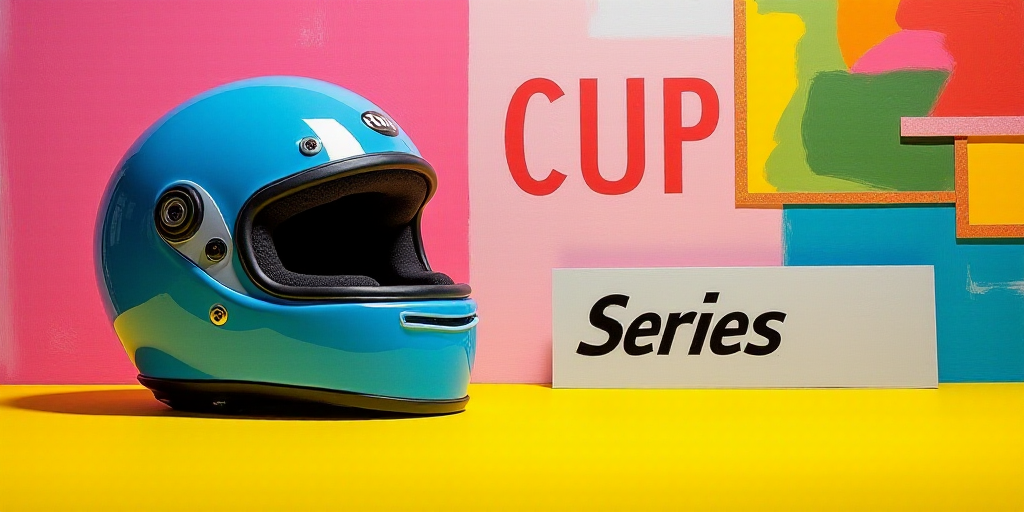Introduction to Juan Manuel Latapí and his Relevance
Juan Manuel Latapí, a renowned Mexican visual artist, has recently designed a culturally significant helmet for NASCAR driver Daniel Suárez. This collaboration between the artist and the racer highlights Latapí’s unique ability to merge art, cultural pride, and high-speed motorsports.
The Collaboration Between Latapí and Daniel Suárez
The partnership between Latapí and Daniel Suárez was facilitated by the Museo Soumaya and sponsors Telcel and Claro. Latapí was chosen to create a helmet that would embody Mexican identity, tradition, and folklore. Suárez sought a helmet that would showcase his roots with pride, while Latapí embarked on his first foray into motorsport design.
Latapí’s Artistic Vision
Latapí aimed to create a helmet that was distinctly Mexican, rich in tradition and folklore, and imbued with historical and ancestral references. He envisioned the helmet as a ceremonial armor that would transform Suárez into a guardian and warrior of supreme speed. The design incorporates symbols like Quetzalcóatl, the Mayan Ik symbol, and the Nahuatl Ollin glyph, all connected to wind, movement, energy, and renewal.
The Helmet’s Design Elements
- Top section: Represents ancestral cosmogony and solar energy connection.
- Front: A warrior’s mask symbolizes animalistic strength, like a jaguar or tiger.
- Sides: Prehispanic symbols of speed and gears, including an obsidian-inspired piece near the visor.
- Back: Piramids, Quetzalcóatl figures, and abstract designs blend Latapí’s artistic style with motorsport references.
Symbolism and Cultural Integration
The helmet’s design embodies the guardian of modern speed, blending history and future, tradition and velocity. The solar aura at the top evokes protection and vital energy with prehispanic echoes in a contemporary visual language. The IK symbol at the front represents wind and air, while prehispanic teeth serve as emblems of protection and attack.
The bottom section alludes to an ancestral totem, a hybrid jaguar-machine-monster with evocative three-dimensionality. This creature integrates animal strength, sacred geometry, and tribal technology, appearing as a divine machine protector from behind. The dynamic patterns capture high-speed movement, while indigenous textiles and codices adorn the cranium, creating a symbiosis between cultural heritage and visual power.
Daniel Suárez’s Emotional Input
Though Suárez did not actively participate in the creative process, he set the emotional tone for the project. He expressed his enthusiasm for racing in Mexico and the need for a helmet that honored his identity. Latapí was granted full creative freedom, developing digital art that was then physically executed by specialized helmet painters approved by NASCAR.
Reception and Future Projects
The helmet was warmly received by both Suárez and the audience. Latapí expressed his experience as if competing without actually racing, stating that his art now traverses the track at over 300 km/h. With upcoming projects like CowParade and collaborations with brands targeting younger audiences, Latapí’s distinctive visual language, known as Trazos Infinitos, continues to bridge art, speed, and symbolism.
Key Questions and Answers
- Who is Juan Manuel Latapí? A Mexican visual artist known for his unique blend of cultural elements and contemporary art.
- What is the significance of the helmet design for Daniel Suárez? The helmet represents Mexican identity, tradition, and folklore while transforming Suárez into a guardian and warrior of supreme speed.
- How was the collaboration between Latapí and Suárez facilitated? The partnership was supported by the Museo Soumaya and sponsors Telcel and Claro.
- What are some key design elements of the helmet? The helmet features symbols like Quetzalcóatl, the Mayan Ik symbol, and the Nahuatl Ollin glyph, along with dynamic patterns and indigenous textiles.






